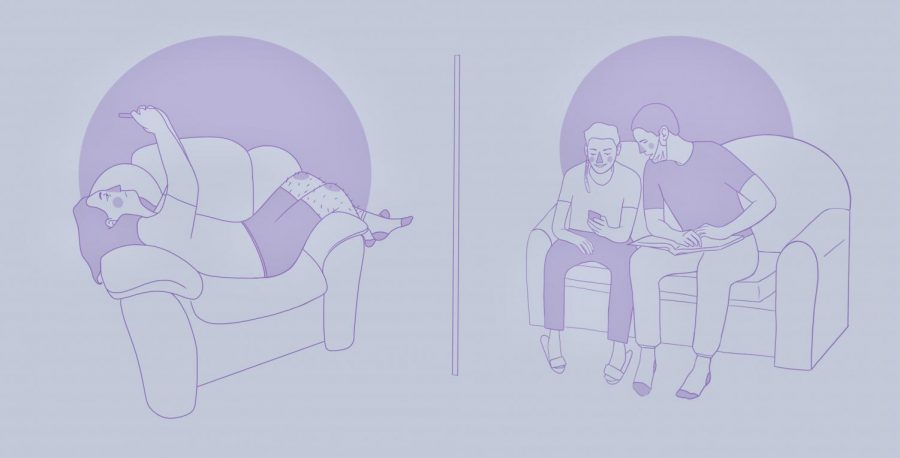Containing COVID Cases: A Plan Full of Holes
March 9, 2021
Ever since the end of August, UVM has been fighting to combat COVID-19 on campus. For the first few months, their strategies were overall successful, with very few cases recorded on campus. But recently, there have been large outbreaks of the virus that have put UVM’s plans to the test.
I have witnessed the chaos of these challenging times first-hand, as I actually received a positive COVID-19 test on February 7th and went through the entire campus quarantine experience. This was a unique experience to say the least. While just about everyone sees it as a detriment, I saw it as an opportunity, a look into what UVM does right and wrong in containing COVID-19 on campus.
UVM has consistently prided itself in how it can contain COVID-19, but is reluctant to admit the weaknesses and flaws in its plans regarding student isolation and quarantine. Due to the recent outbreaks, the university has changed its approach rapidly in recent weeks, but it still has weaknesses in its plan and aspects that can be improved. This concerns both enforcing more stringent quarantine measures and catering to students’ mental health.
In quarantine itself, students had their own rooms, while we were allowed to interact with one another and move freely around the building and even immediately outside.
Supervision was minimal, with a nurse only visiting once per day if at all. This led to people feeling free to do almost anything they wanted, with little distancing and drug/alcohol usage at times, especially at night.
This feeling of freedom comes from the perception that masks and distancing are useless if you’re already sick. While true to some degree, there is still reason to be cautious, as the new COVID-19 variants are still a mystery in many ways, and some are worried they could worsen a current infection.
There is also a lack of reliable medical contact if COVID-19 takes a nasty turn. One student who came in appeared to have several symptoms more severe than most of us, and it actually had us fearing for her health.
We called Student Health Services that night and it took multiple attempts to get through, but their response was basically to sleep it off and see how they felt in the morning, despite the dramatic worsening of symptoms in the hours before.
It seems as if they’re almost okay with neglecting us in a sense. Luckily, the student was able to recover without any intervention, but it just makes you wonder what could happen if someone had an even worse infection.
Still, it is good to know that the University has acted quickly as new strains of COVID-19 are popping up in Vermont, with students now confined to their rooms other than to go to the bathroom or get food. Still, many students chose not to listen due to this lack of enforcement.
It appears that they are trying to make the COVID-19 dorm resemble Jeanne Mance, the dorm for potential COVID-19 cases/contacts, in some ways.
Sam Jefferson, a freshman who also writes for the Cynic, was quarantined there for around two weeks. He noted that over there, the dorm is almost-prison like, with students confined to their rooms, only occasionally being allowed outside. There is also a constant staff presence there, with shifts lasting up to 12 hours.
Even here, COVID-19 can still find a way, as Sam was exposed to an infected friend while he was let outside. Perhaps outings should be limited to individuals or watched in some way in order to prevent this spreading opportunity, despite the unlikelihood of it happening.
While these conditions may seem good on paper, they provide the opposite problem to those seen in Slade during the beginning of the semester. They are scaring people and damaging their mental well-being. They have damaged relationships after contacts couldn’t forgive me and others for forcing them to endure this treatment for over a week.
It makes giving close contacts almost feel like sentencing people to torture in hindsight, and may cause those who test positive for COVID-19 to not do so.
Meanwhile, the mood in Slade was pretty jovial, with people still close to others if they’re with those that spread it to them. In fact, it seemed as if COVID-19 brought people closer together, as I made several friends during quarantine.
Both dorms, especially Jeanne Mance, could be made less oppressive by organizing activities and allowing parking lots and possibly common rooms to be shared if people are socially-distanced/masked.
This would be similar in some ways to the out-of-state quarantine provided prior to the start of the semester. Students could also be separated into small floor groups to ensure that an outbreak wouldn’t spread to the whole dorm.
Hard-quarantine could be enforced for a few days in floors that reveal positive COVID-19 cases, and students may be more understanding with proof of contact in that way.
A similar thing could be done in Slade by testing everyone for the UK variant and separating those who test positive from others, who can interact more freely (though still being masked).
My experience with COVID-19 and being with others like me has revealed what does and doesn’t work in regards to maintaining student physical and mental health in the isolation and quarantine dorms.
UVM is taking significant action to combat COVID-19 in response to the recent campuswide outbreak, but as is often the case, their plan leaves holes that must be fixed or be made safer.
I was in Slade Hall for eight days and was “released” on February 15th due to not being contagious anymore (as per CDC guidance), and now only have a few mild symptoms, including an inability to smell.
As I returned to my dorm, I felt both a personal relief for beating the virus as someone who is immunocompromised, but also a deep concern about how the current outbreak would affect the rest of the semester for myself and others.
I really do hope that UVM takes the time to hear student feedback and try to find ways to reform quarantine and isolation to find a balance between physical and mental health. While reforms may not slow the spread of COVID-19 on campus, it can make isolating safer and less draining on students.







